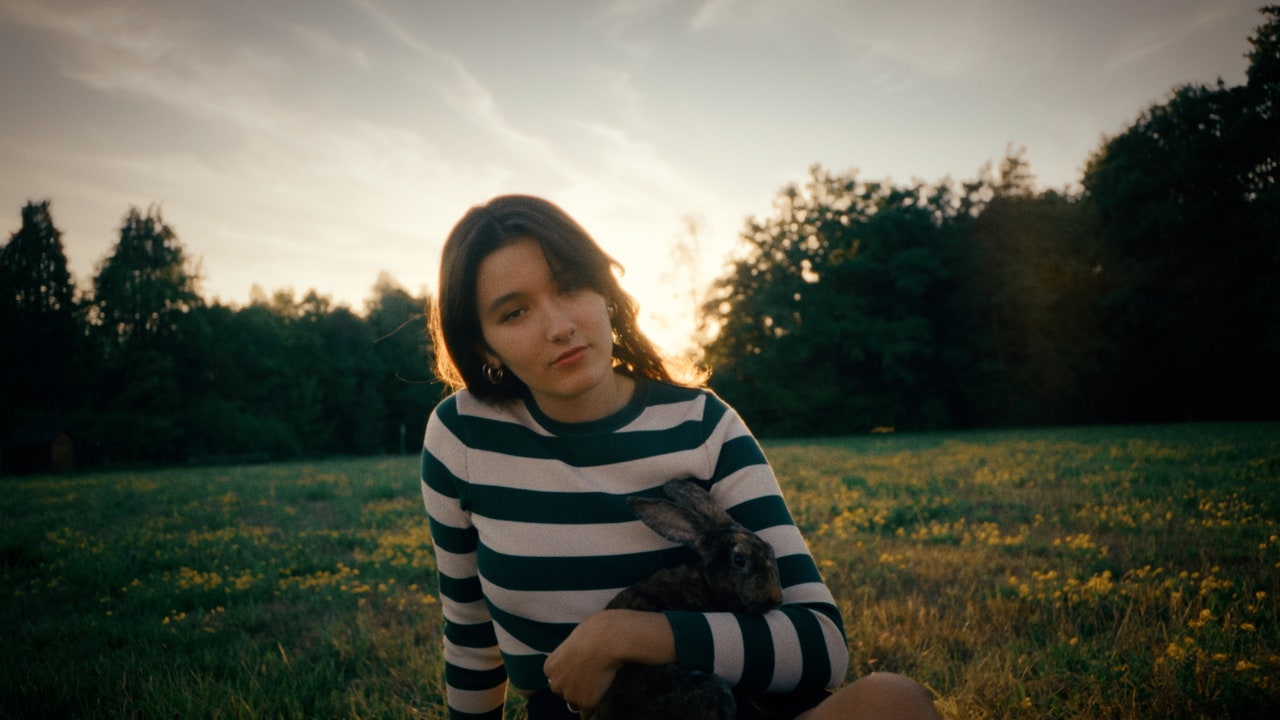The filmmaker Nicola Fegg stumbled upon Valeria’s videos, describing them as “utterly delightful—and also quite peculiar.”
During the bombardment two years ago, Valeria Shashenok, a twenty-year-old aspiring fashion photographer, sought refuge with her family in a basement in Chernihiv, a city located north of Kyiv, as Russian forces besieged the area. While anxiously waiting, Valeria decided to distract herself by creating videos, including a unique take on the popular “things that just make sense” trend, showcasing the mundane absurdities of life in a bomb shelter. She captured moments of preparing meals on a hot plate, brewing coffee with a blowtorch, and ventured outside to document the destruction caused by the bombings. Infusing her videos with deadpan humor—expressed through eye rolls, bewildered gestures, and disbelieving headshakes—Valeria channeled her frustration. In the initial stages of the conflict, Ukrainians sought solace in dark humor, and Valeria’s videos quickly gained traction, with one video garnering over twenty million views in just three days. A week later, she made the decision to flee Ukraine, joining the millions displaced by the war.
Upon discovering Valeria’s videos, Nicola Fegg was captivated by their charm and peculiarity. She admitted, “I was intrigued by the source of her humor.” This curiosity prompted Fegg to embark on the creation of her documentary “Following Valeria.” Their paths crossed in Warsaw, where Valeria arrived after a two-day journey, exhausted yet resolute in her new role as a social media influencer. Fegg followed Valeria across Europe, from Berlin to Milan and a village near Nuremberg, observing her continued documentation of life on TikTok. Throughout her travels, Valeria maintained a sense of ironic amusement, likening her experiences to a reality show akin to “Keeping Up with the Kardashians.”
Before the war, Valeria utilized TikTok to showcase her work as a commercial photographer. However, as her social media presence grew, she began leveraging her platform to contribute in a small yet meaningful way to the war effort, raising awareness among distant viewers. She actively supported a humanitarian organization in Chernihiv and provided financial aid to her uncle, who was injured in a bombing incident that claimed the life of her cousin. The swift response of strangers donating to aid Ukraine underscored the impact of her newfound influence, prompting Valeria to reflect on the significance of her platform. She marveled, “I couldn’t believe how quickly donations poured in.”
The documentary captures moments of Valeria’s journey against the backdrop of a speeding train or a rolling suitcase, as she navigates unfamiliar terrain, participates in pro-Ukraine demonstrations, and attends a State of the Union address at the European Commission. Fegg noted the compelling juxtaposition between Valeria’s influencer persona and her refugee status, highlighting the tension that defined her identity. Valeria’s upbringing in post-independence Ukraine instilled a cynical view of politics, which evolved in the wake of the war. She acknowledged the complexities of trauma voyeurism surrounding her early Chernihiv videos, recognizing a mutual exchange between herself and her audience.
A poignant scene unfolds in Germany, where Valeria, far from her homeland, grapples with recording responses to interview questions about Ukraine, symbolizing her quest for a voice amidst adversity. She dismisses online accusations of exploiting the war for fame, expressing a desire for peace over notoriety. Inspired by historical figures like [ppp14], Valeria embodies resilience in the face of adversity. Despite her return to Ukraine, she continues to share her story online.
